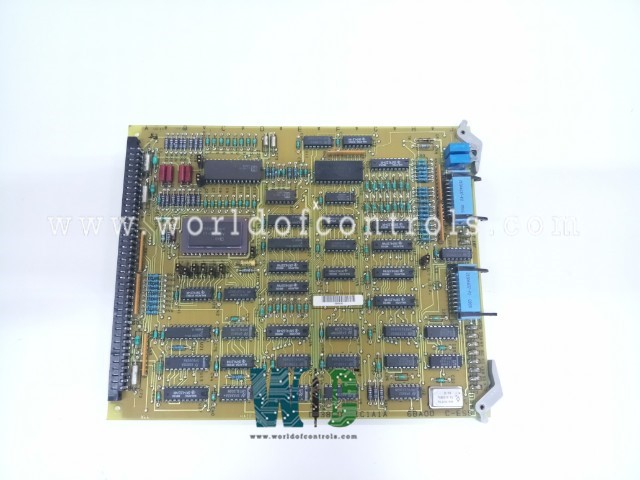
World Of Controls understands the criticality of your requirement and works towards reducing the lead time as much as possible.
DS3800HA1C - Analog Input Board is available in stock which ships the same day.
DS3800HA1C - Analog Input Board comes in UNUSED as well as REBUILT condition.
To avail our best deals for DS3800HA1C - Analog Input Board, contact us and we will get back to you within 24 hours.
SPECIFICATIONS:
Part Number: DS3800HA1C
Manufacturer: General Electric
Series: Mark IV
Product Type: Analog Input Board
Number of channels: 12
Operating temperature: -30 to 65 degrees Celsius
Size: 8.25 cm high x 4.18 cm
Repair: 3-7 Day
Availability: In Stock
Weight: 2 lbs
Country of Origin: United States
FUNCTIONAL DESCRIPTION:
DS3800HA1C is an Analog Input Board manufactured and designed by General Electric as part of the Mark IV Series used in GE Speedtronic Gas Turbine Control Systems. The Analog Input Board in turbine control systems is a vital component that facilitates the continuous monitoring and processing of various analog signals from sensors and transducers installed throughout the turbine. These signals represent key operational parameters, including temperature, pressure, speed, and vibration, which are critical for safe and efficient turbine operation.
The board interfaces with sensors such as thermocouples, resistance temperature detectors (RTDs), pressure sensors, speed sensors, and vibration monitors. It performs essential functions like signal conditioning, which involves amplifying, filtering, and isolating raw signals to enhance their quality and ensure accuracy. After conditioning, the board converts these analog signals into digital data through analog-to-digital conversion (ADC), making it suitable for processing by the turbine's control system. This digital information is crucial for real-time monitoring and control, allowing the system to make immediate adjustments to maintain optimal performance. By ensuring the turbine operates within safe limits and responding quickly to any abnormalities, the Analog Input Board enhances the overall safety, reliability, and efficiency of the turbine operation.
FUNCTIONS OF ANALOG INPUT BOARD:
Signal Acquisition: The Analog Input Board receives analog signals from sensors positioned around the turbine and auxiliary systems. These sensors convert physical phenomena (e.g., temperature, speed) into electrical signals, typically in the form of current (4-20 mA) or voltage (0-10 V). The board’s primary job is to collect these signals and prepare them for processing by the control system.
Signal Conditioning: The raw signals from sensors are often weak or noisy. The Analog Input Board includes circuitry for signal conditioning (e.g., amplification, filtering, and isolation). This process ensures the signal quality is high enough for accurate interpretation by the control system, preventing errors due to signal degradation.
Analog-to-Digital Conversion (ADC): Analog signals are continuous, while the control system’s processor typically requires digital input. The board has an ADC to convert the conditioned analog signals into digital data, which can then be read and interpreted by the control system. The resolution of the ADC (e.g., 12-bit, 16-bit) determines the precision of the conversion and directly affects the accuracy of the control system's response.
WOC has the largest stock of replacement parts for GE Speedtronic Gas turbine control systems. We can also repair your faulty boards and supply unused and rebuilt boards backed up with a warranty. Our team of experts is available round the clock to support your OEM needs. Our team of experts at WOC is happy to assist you with any of your automation requirements. For pricing and availability on parts and repairs, kindly contact our team by phone or email.
What types of sensors typically connect to an Analog Input Board in turbine systems?
Sensors commonly used with Analog Input Boards in turbines include thermocouples or RTDs for temperature, pressure transducers for pressure levels, magnetic pickups for speed, and accelerometers or other vibration sensors to monitor mechanical health.
How does an Analog Input Board improve the accuracy of measurements?
The board performs signal conditioning, which includes amplifying, filtering, and isolating signals to reduce noise and increase clarity. This process ensures that only high-quality, accurate data reaches the control system for processing.
Why is analog-to-digital conversion (ADC) necessary on the board?
Turbine control systems usually process digital data, so the ADC converts the continuous analog signals from sensors into digital form. This conversion enables the control system to analyze and act on the data in real time.